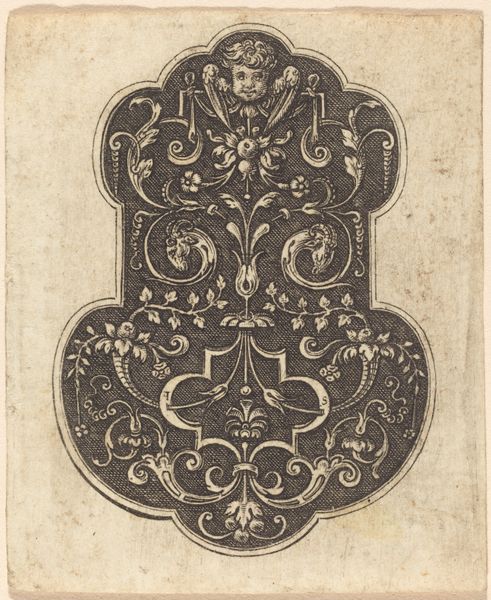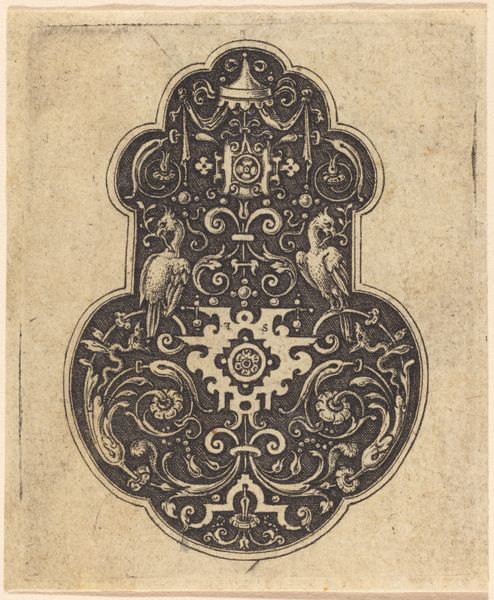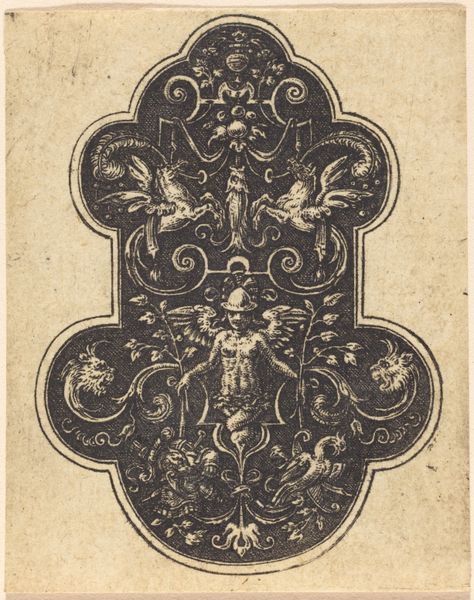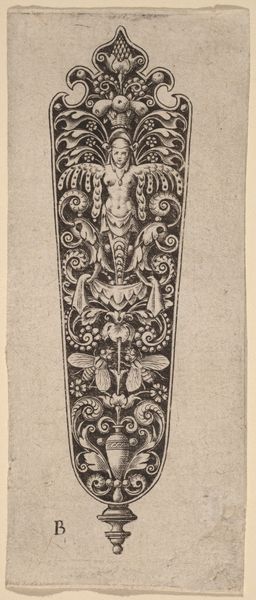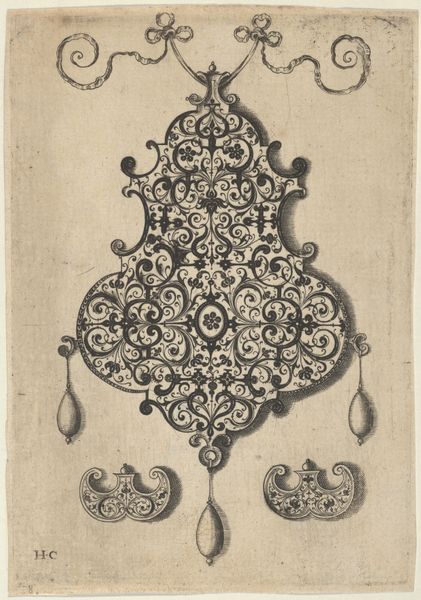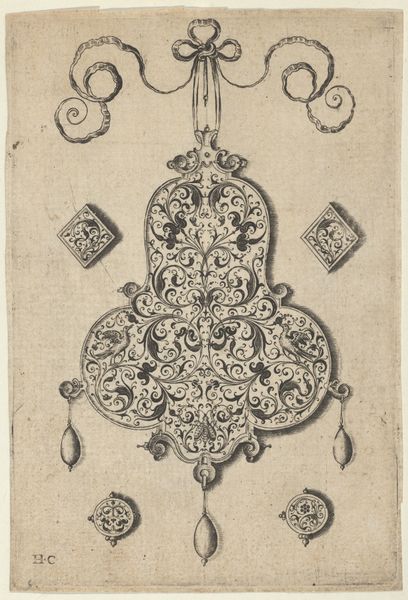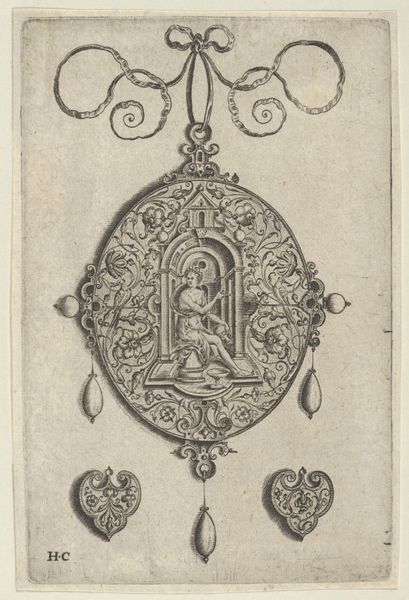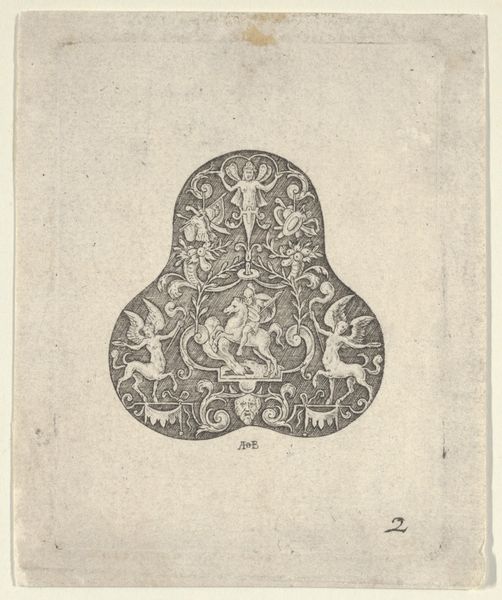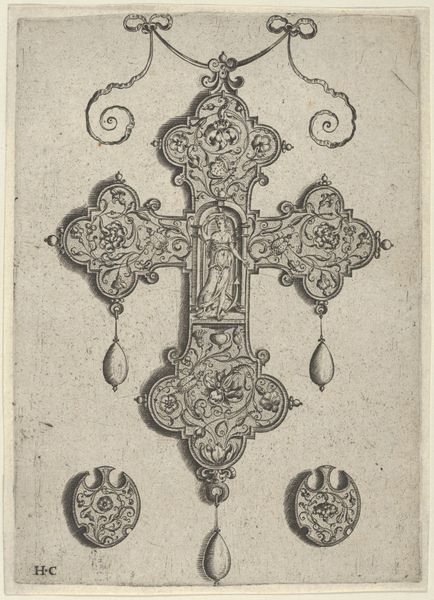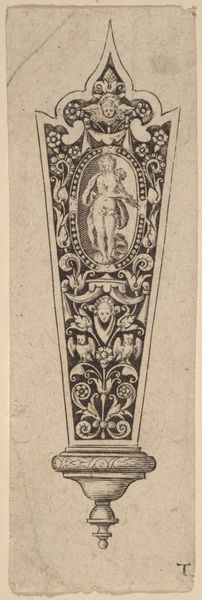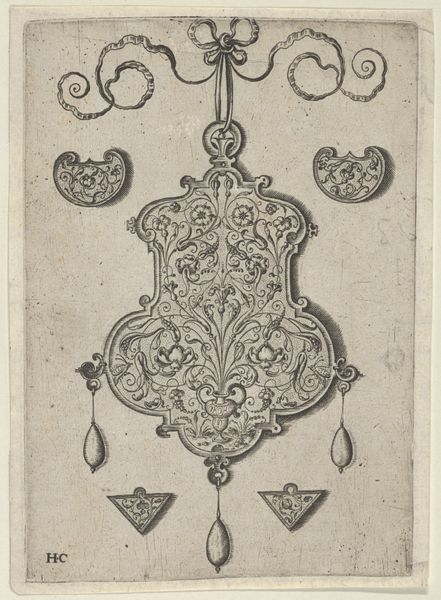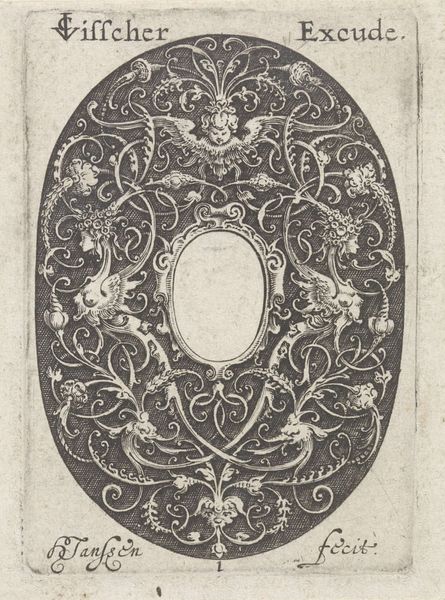
drawing, print, ink, pen, engraving
drawing
figuration
11_renaissance
ink
pen-ink sketch
line
pen work
pen
history-painting
engraving
Dimensions: height 52 mm, width 41 mm
Copyright: Rijks Museum: Open Domain
Editor: So, this is “Winged Female Herm” by Etienne Delaune, dating from sometime between 1528 and 1573. It's a pen and ink engraving. It's so intricate! What do you make of its dense imagery? Curator: The density is key. Think about printmaking's role during the Renaissance. It allowed for the widespread distribution of imagery, which shaped visual culture and, by extension, social and political values. Consider the context: Who would have seen this, and how might it have been used? Editor: Perhaps part of a collection for artists? A source of inspiration for designs? Curator: Precisely. These kinds of prints were often collected and served as a visual resource. Delaune was working at a time when classical motifs were being revived and reinterpreted to serve new ideological functions. So how does this “Winged Female Herm” reflect the dynamics of power in the society where this circulated? Editor: Well, the dragons might reference heraldry, so nobility... And she has wings – is that to do with divinity, maybe? Or perhaps representing something else, such as a powerful family? Curator: The wings, the herm form… these all speak to transformation, transcendence, even potent rulership. What institutions might have fostered and perpetuated the production of images such as these? Editor: Perhaps the royal courts themselves, which required visual statements about their legitimacy. It is like propaganda almost. I hadn't quite seen the potential for visual rhetoric. Curator: Exactly. The circulation of imagery held real power in the 16th century. I hope you take that with you!
Comments
No comments
Be the first to comment and join the conversation on the ultimate creative platform.

